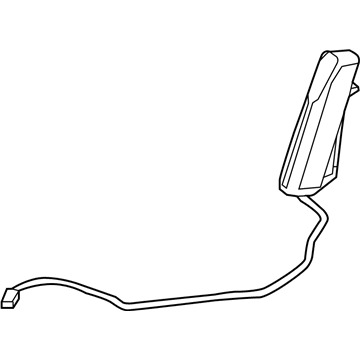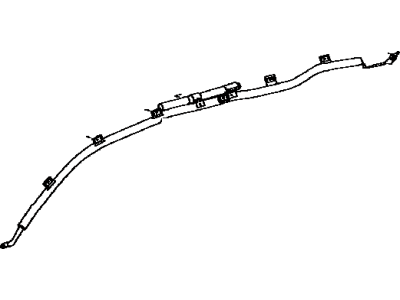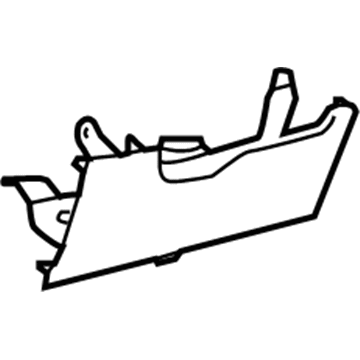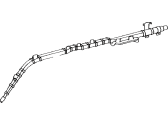

My Garage
My Account
Cart
Genuine Toyota Yaris Air Bag
Air Bag Module- Select Vehicle by Model
- Select Vehicle by VIN
Select Vehicle by Model
orMake
Model
Year
Select Vehicle by VIN
For the most accurate results, select vehicle by your VIN (Vehicle Identification Number).
43 Air Bags found
Toyota Yaris Instrument Air Bag Assembly
Part Number: 73960-WB002$250.98 MSRP: $359.88You Save: $108.90 (31%)Ships in 1-3 Business DaysToyota Yaris Curtain Shield Air Bag Assembly
Part Number: 62170-WB002$471.27 MSRP: $703.03You Save: $231.76 (33%)Ships in 1-3 Business DaysToyota Yaris Front Seat Air Bag Assembly
Part Number: 73920-WB001$239.42 MSRP: $343.31You Save: $103.89 (31%)Ships in 1-3 Business DaysToyota Yaris Front Seat Air Bag Assembly
Part Number: 73910-WB001$237.77 MSRP: $340.94You Save: $103.17 (31%)Ships in 1-3 Business DaysToyota Yaris Instrument Panel Passenger W/O Door Air Bag Assembly
Part Number: 73960-52080$533.58 MSRP: $796.00You Save: $262.42 (33%)Ships in 1-3 Business DaysToyota Yaris Front Seat Air Bag Assembly
Part Number: 73910-52070$344.74 MSRP: $514.28You Save: $169.54 (33%)Ships in 1-3 Business DaysToyota Yaris Curtain Shield Air Bag Assembly
Part Number: 62180-WB002$414.13 MSRP: $617.81You Save: $203.68 (33%)Ships in 1-3 Business DaysToyota Yaris Curtain Shield Air Bag Assembly
Part Number: 62170-0D050$504.86 MSRP: $753.15You Save: $248.29 (33%)Ships in 1-3 Business DaysToyota Yaris Curtain Shield Air Bag Assembly
Part Number: 62170-52120$504.86 MSRP: $753.15You Save: $248.29 (33%)Ships in 1-3 Business DaysToyota Yaris Instrument Panel Passenger W/O Door Air Bag Assembly
Part Number: 73960-52030$738.79 MSRP: $1103.12You Save: $364.33 (34%)Ships in 1-3 Business DaysToyota Yaris Curtain Shield Air Bag Assembly
Part Number: 62170-0D132$707.92 MSRP: $1057.03You Save: $349.11 (34%)Ships in 1-3 Business DaysToyota Yaris Curtain Shield Air Bag Assembly
Part Number: 62170-0D142$683.87 MSRP: $1021.12You Save: $337.25 (34%)Ships in 1-3 Business DaysToyota Yaris Curtain Shield Air Bag Assembly
Part Number: 62180-0D132$707.92 MSRP: $1057.03You Save: $349.11 (34%)Ships in 1-3 Business DaysToyota Yaris Curtain Shield Air Bag Assembly
Part Number: 62180-0D142$683.87 MSRP: $1021.12You Save: $337.25 (34%)Ships in 1-3 Business DaysToyota Yaris Instrument Air Bag Assembly
Part Number: 73900-0D031-C1$795.05 MSRP: $1187.12You Save: $392.07 (34%)Ships in 1-3 Business DaysToyota Yaris Instrument Air Bag Assembly
Part Number: 73900-0D031-C0$807.63 MSRP: $1205.90You Save: $398.27 (34%)Ships in 1-3 Business DaysToyota Yaris Instrument Air Bag Assembly
Part Number: 73900-52071-C0$792.81 MSRP: $1183.78You Save: $390.97 (34%)Ships in 1-3 Business DaysToyota Yaris Front Seat Air Bag Assembly
Part Number: 73910-52190$349.15 MSRP: $520.87You Save: $171.72 (33%)Ships in 1-3 Business DaysToyota Yaris Air Bag Assembly, Front Seat
Part Number: 73920-52070$381.54 MSRP: $569.18You Save: $187.64 (33%)Toyota Yaris Air Bag Assembly, Front Seat
Part Number: 73920-52191$349.15 MSRP: $520.87You Save: $171.72 (33%)
| Page 1 of 3 |Next >
1-20 of 43 Results
Toyota Yaris Air Bag
If you are in demand for superior quality and affordable OEM Toyota Yaris Air Bag, then shop with us! We own a wide range of the reduced-priced genuine Toyota Yaris Air Bag. You can purchase in confidence as all parts come with a manufacturer's warranty. Any issues with our products? No need to worry as we have a hassle-free return policy to guide you every step of the way.
Toyota Yaris Air Bag Parts Questions & Experts Answers
- Q: What Air Bag Precautions Should Be Known for the Toyota Yaris?A:Driver's and front seat passenger's airbags are standard on most models, with the driver's airbag located in the steering wheel and the passenger's unit in the facia, designed to deploy during head-on collisions. Later models may include side airbags that activate during lateral impacts, and the system is armed when the ignition is on, with a reserve power source available if the main electrical supply fails. Activation occurs through 'g' sensors in the electronic control unit, which also manages front seat belt tensioners. Airbags inflate rapidly via gas generators, posing a risk of injury if deployed unintentionally. Precautions when working on vehicles with airbags include not disconnecting the battery while the engine is running, deactivating the system before any work near the airbag, avoiding testing circuits with meters, and consulting a dealer if the airbag warning light activates. When handling an airbag, it should be transported bag upwards, kept close to the body, and protected from impacts, while dismantling or connecting electrical equipment to the airbag circuit is prohibited. For storage, the airbag should be kept in a cupboard with the bag upwards, away from high temperatures and flames, and any faulty units should not be reused. Deactivation of the airbag system requires switching off the ignition, removing the key, disconnecting the battery negative lead, insulating the terminal, and waiting at least two minutes before proceeding with any work.




















